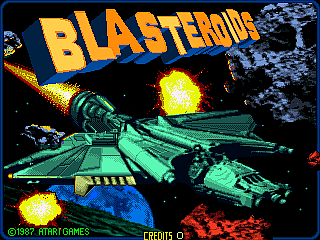Blasteroids (rev 4)
Game Information
| manufacturer | Atari Games |
| year | 1987 |
| cloned by | blstroid2 blstroid3 blstroidg blstroidh |
| genre | Shoot-'Em-Up |
| downloads | 332 |
Screenshots










Download Details
| split set | blstroid.zip 598.54k |
| merged set | blstroid.7z 548.85k |
| standalone set | blstroid.7z 504.21k |
| artwork | blstroid.zip 741.49k |
Driver Details
| source | atari/blstroid.cpp |
| status | good |
| emulation | good |
| savestate | supported |
Series Details
Screen Details
| display | screen |
| type | raster |
| orientation | horizontal |
| width | 640px |
| height | 240px |
| refresh | 59.92mhz |
Input Details
| player | 1 |
| type | dial |
| buttons | 4 |
| directions | N/A |
| player | 2 |
| type | dial |
| buttons | 4 |
| directions | N/A |
Chipset Details
| name | Motorola MC68000 |
| clock | 6.83mhz |
| name | MOS Technology 6502 |
| clock | 1.71mhz |
| name | Speaker |
| clock | N/A |
| name | Atari JSA I Sound Board |
| clock | N/A |
| name | YM2151 OPM |
| clock | 3.41mhz |
ROM Details
| name | size | crc |
|---|---|---|
| 136057-4123.6c | 64.00k | d14badc4 |
| 136057-4121.6b | 64.00k | ae3e93e8 |
| 136057-4124.4c | 64.00k | fd2365df |
| 136057-4122.4b | 64.00k | c364706e |
| 136057-1135.2k | 64.00k | baa8b5fe |
| 136057-1101.1l | 64.00k | 3c2daa5b |
| 136057-1102.1m | 64.00k | f84f0b97 |
| 136057-1103.3l | 64.00k | ae5274f0 |
| 136057-1104.3m | 64.00k | 4bb72060 |
| 136057-1105.5m | 64.00k | 50e0823f |
| 136057-1107.67m | 64.00k | 729de7a9 |
| 136057-1109.8m | 64.00k | 090e42ab |
| 136057-1111.10m | 64.00k | 1ff79e67 |
| 136057-1113.11m | 64.00k | 4be1d504 |
| 136057-1115.13m | 64.00k | e4409310 |
| 136057-1117.14m | 64.00k | 7aaca15e |
| 136057-1119.16m | 64.00k | 33690379 |
| 136057-1106.5n | 64.00k | 2720ee71 |
| 136057-1108.67n | 64.00k | 2faecd15 |
| 136057-1110.8n | 64.00k | a15e79e1 |
| 136057-1112.10n | 64.00k | 4d5fc284 |
| 136057-1114.11n | 64.00k | a70fc6e6 |
| 136057-1116.13n | 64.00k | f423b4f8 |
| 136057-1118.14n | 64.00k | 56fa3d16 |
| 136057-1120.16n | 64.00k | f257f738 |